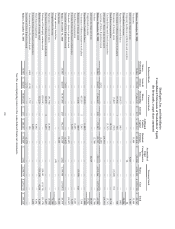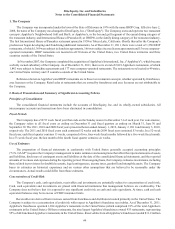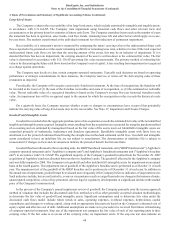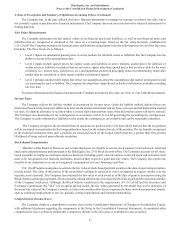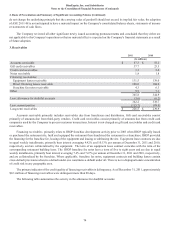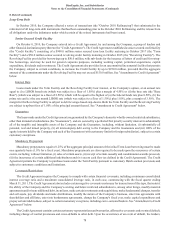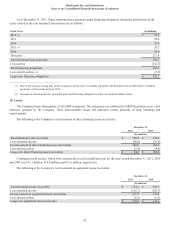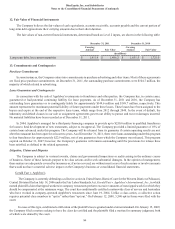IHOP 2011 Annual Report Download - page 92
Download and view the complete annual report
Please find page 92 of the 2011 IHOP annual report below. You can navigate through the pages in the report by either clicking on the pages listed below, or by using the keyword search tool below to find specific information within the annual report.
DineEquity, Inc. and Subsidiaries
Notes to the Consolidated Financial Statements (Continued)
2. Basis of Presentation and Summary of Significant Accounting Policies (Continued)
74
do not change the underlying principle that the carrying value of goodwill should not exceed its implied fair value, the adoption
of ASU 2011-08 is not anticipated to have a material impact on the Company's consolidated balance sheets, statements of income
or statements of cash flows.
The Company reviewed all other significant newly issued accounting pronouncements and concluded that they either are
not applicable to the Company's operations or that no material effect is expected on the Company's financial statements as a result
of future adoption.
3. Receivables
Accounts receivable
Gift card receivables
Credit card receivables
Notes receivable
Financing receivables:
Equipment leases receivable
Direct financing leases receivable
Franchise fee notes receivable
Other
Less: allowance for doubtful accounts
Less: current portion
Long-term receivables
2011
(In millions)
$ 57.3
37.7
3.3
1.8
131.5
100.0
4.3
9.9
345.8
(3.6)
342.2
(115.7)
$ 226.5
2010
$ 55.2
25.5
5.4
1.8
139.0
104.6
6.3
7.1
344.9
(6.2)
338.7
(98.8)
$ 239.9
Accounts receivable primarily includes receivables due from franchisees and distributors. Gift card receivables consist
primarily of amounts due from third-party vendors. Credit card receivables consist primarily of amounts due from credit card
companies used by the Company to process customer transactions. Interest is not charged on gift card receivables and credit card
receivables.
Financing receivables primarily relate to IHOP franchise development activity prior to 2003 when IHOP typically leased
or purchased the restaurant site, built and equipped the restaurant then franchised the restaurant to a franchisee. IHOP provided
the financing for the franchise fee, leasing of the equipment and leasing or subleasing the site. Equipment lease contracts are due
in equal weekly installments, primarily bear interest averaging 9.92% and 10.13% per annum at December 31, 2011 and 2010,
respectively, and are collateralized by the equipment. The term of an equipment lease contract coincides with the term of the
corresponding restaurant building lease. The IHOP franchise fee notes have a term of five to eight years and are due in equal
weekly installments, primarily bear interest averaging 7.4% and 7.67% per annum at December 31, 2011 and 2010, respectively,
and are collateralized by the franchise. Where applicable, franchise fee notes, equipment contracts and building leases contain
cross-default provisions wherein a default under one constitutes a default under all. There is not a disproportionate concentration
of credit risk in any geographic area.
The primary indicator of the credit quality of financing receivables is delinquency. As of December 31, 2011, approximately
$0.3 million of financing receivables were delinquent more than 90 days.
The following table summarizes the activity in the allowance for doubtful accounts:


